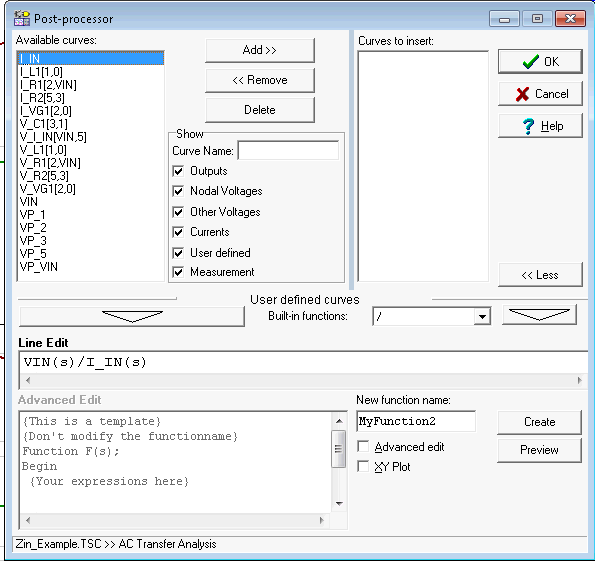Tool/software: TINA-TI or Spice Models
Hello, I am trying to calculate the impedance seen on a node. The circuit below is provided just as an example of what I am trying to accomplish.
I am varying C1 from 1 to 10nF and L1 from 1 to 10uH. I get this:
Now, I would like to have the impedance seen on node VF1, comprised by the RLC. With LTSpice is just a matter of adding a trace with the quocient between V(vf1) and I(R1).
I could not figure out how to do the same with TINA in a simple way.
Thank you in advance for any hint on this.













